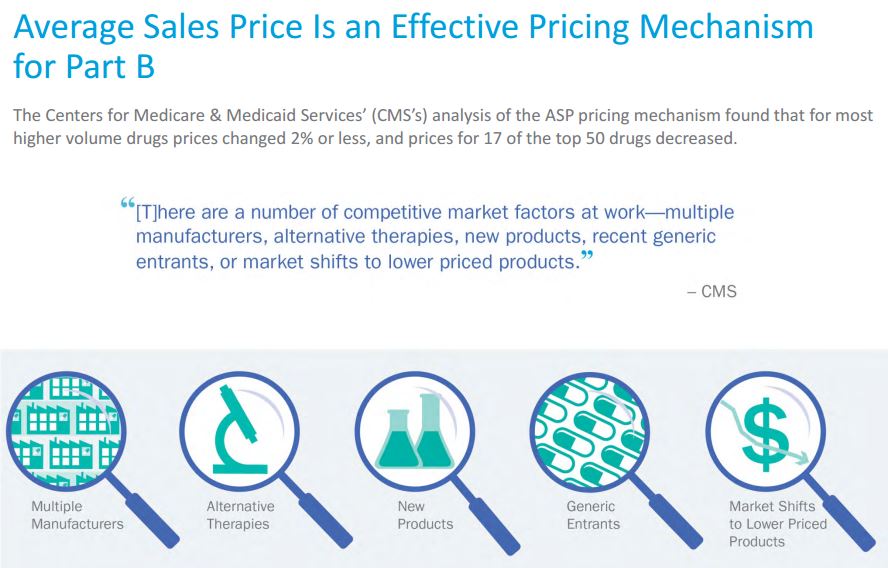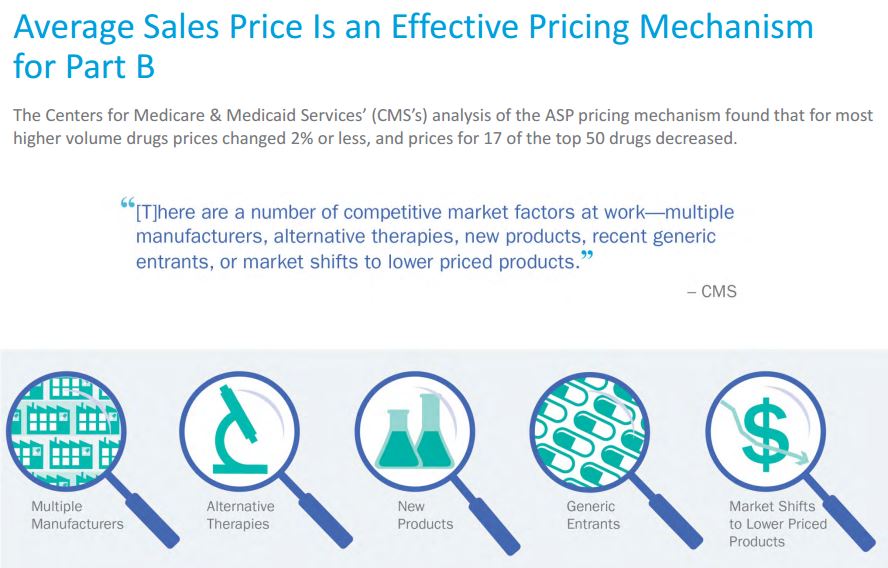
We’ve written previously about Medicare Part B and what it covers, but today we are taking a closer look at how Medicare Part B pays for medicines. With some exceptions for certain classes, the current reimbursement methodology for Part B drugs administered in physician offices and hospital outpatient departments is Average Sales Price (ASP)+6 percent.
ASP is a market-based price that reflects the weighted average of all manufacturer sales prices and includes all rebates and discounts that are privately negotiated between manufacturers and purchasers (with the exception of Medicaid and certain federal discounts and rebates). This methodology mirrors reimbursement for physician-administered drugs in the commercial market.
The Part B reimbursement methodology includes a six percent add-on payment to account for variability in provider acquisition costs and the additional costs associated with the complexity of Part B drugs, many of which are used to treat serious illnesses such as cancer, cerebral palsy, and multiple sclerosis. The six percent add-on helps cover:
- Geographic and provider purchasing variability;
- Shipping fees;
- Complex administration;
- Ongoing patient monitoring and education; and
- Overhead for complex storing and handling requirements.

The structure of the Part B drug benefit enables the program to capture the power of the market to save Medicare and beneficiaries money while maintaining adequate reimbursement for new treatments. An analysis by the Centers for Medicare and Medicaid Services found that prices for most higher volume drugs changed two percent or less, and prices for 17 of the top 50 drugs decreased. Overall, average price growth in Medicare Part B is currently less than medical inflation. Spending on Part B drugs provided by physicians and hospital outpatient departments represents just 3 percent of total Medicare expenditures and has remained flat as a share of total expenditures in Part B (8 percent).
In a future post, we will explore the effect of sequestration, which reduced Medicare reimbursement for Part B covered drugs to ASP+4.3 percent.





